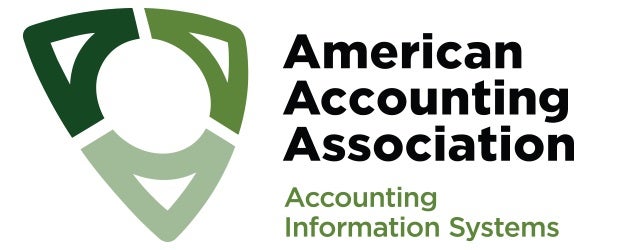JIS WORKSHOP ON ROBOTIC PROCESS AUTOMATION (RPA) RESEARCH:
VIEWS FROM RPA INDUSTRY LEADERS AND AIS RESEARCHERS
Co-sponsored by the AIS section of the AAA and the UW CISA


Online - Friday September 25th from 1 - 4 pm (Eastern Daylight Time Canada)
Advance registration is required. The registration fee is $50 but a 50% discount is available for AAA AIS Section members, AAA SET Section members, ISACA Toronto Chapter members, IIA Canada/Toronto Chapter members and CPA Canada members and a 100% discount is available for students. This workshop qualifies for 3.5 hrs of CPE credit.
Please send an email to jeboritz@uwaterloo.ca indicating your interest and we will send you the link to register. Please let us know if you are a member of one of the groups listed above so we can send you the proper code.
Workshop Description and Objectives:
The aim of this workshop is to bring together Accounting Information Systems (AIS) researchers, representatives from leading RPA product and service providers, RPA users and practitioners working with or considering working with RPA, to have a conversation on RPA related challenges and research opportunities.
We hope through the interaction to achieve the following objectives: First, provide an opportunity for RPA software, implementation firms and users to articulate some of the issues/challenges they face. Second, provide an opportunity to researchers interested in these topics/ideas to start exploring the possibility of collaboration with practitioners on addressing these research questions. Third, convert these research topics/ideas into a call for papers for a special issue of JIS on the topic of RPA in order to expand our understanding of this growing area of activity.
Background:
The IEEE Corporate Advisory Group (IEEE 2017) describes robotic process automation (RPA) as an instance of preconfigured software that uses a combination of business rules and predefined “activity choreography” to complete a series of tasks on one or more software systems. In simple terms this means that while RPA is like recorded macros in Excel, it can be configured to perform tasks based on different systems. For example, it can read emails and trigger responses, open PDFs and use OCR to read contracts, login into ERP systems to read/write data, leverage human-supervised machine learning (ML) to identify non-explicit rules, or enable customers to interact directly with systems via chatbots (Moffitt et al. 2018; Plattfaut 2019; Miers et al. 2019).
State of Adoption:
Approaching the RPA from both the supply side (firms involved in the delivery of RPA solutions) and demand side (firms investing in RPA initiatives) there is ample evidence that the market is vibrant. According to Gartner’s 2019 report, RPA is the fastest growing software segment with an annual growth of 63% (Miers et al. 2019). A 2019 survey (Protiviti 2019) has shown that relatively large companies (i.e., companies with sales of a billion dollars or more) have been investing between $10-$20 million per year in RPA projects and this is likely to continue in the near future. Respondents in the Protiviti (2019) survey reported that this spending is motivated by expected benefits in increased productivity, better product quality, and strong competitive market position. However, the success of these investments is hindered by inability to prioritize potential projects and pursue the best applications.
Challenges:
A Gartner report (Miers et al. 2019) focuses on several misconceptions and challenges associated with RPA; for example: 1) RPA adoption is not likely to lead to labor cost reduction, because the firms tend to refocus employees towards more value adding activities. Cooper et al. (2019) corroborate this based on feedback from accounting firms. 2) RPA is not suitable for automating lengthy processes. It is more suitable for processes that last just a couple of seconds. For lengthy processes, intelligent business process management systems (iBPMS) are more appropriate. 3) RPA is just one tool, rather than the only tool, in the automation toolbox. RPA should be seen as a complement of other tools as iBPMS and process mining. 4) Use of RPA has been described as “long-term technical debt” as it binds the organization to legacy systems. 5) While some vendors claim that that their software contains machine learning (ML) algorithms, there is relatively little room for leveraging ML in the core of RPA.
Research Opportunities:
The state of diffusion of an emerging technology determines “what types of research questions we can address, what research data is available and what methodologies are available to study a technology and its uses” (O’Leary 2008, 241). The 2019 Gartner Hype Cycle does not include RPA in its list of technologies tracked by Gartner.[1] However, in a local version of the Hype Cycle (Dubai, AEE), RPA software is shown in the trough of disillusionment.[2] O’Leary argues that during this stage, information about the technology is likely to be limited. Therefore, research would mostly focus on implementation issues and limitations of the technology.
Research at the intersection of RPA and accounting has been relatively active. For example, Moffit et al., (2018) have examined the use of RPA in audit and suggested several research topics, including challenges of RPA implementation and how to address them. The study by Kokina and Blanchette (2019) leverage feedback from RPA adopters to analyze implementation issues and performance outcomes. Organizations benefit from automating rules-based, well-structured processes with digital inputs. The primary benefits include cost savings, improved process documentation, lower error rates, more accurate measurement of process performance, and better report quality. Two recent studies (Cooper et al. 2019; Cooper et al. 2020) have examined RPA implementations among the Big 4 accounting firms. While the former looked at the RPA leaders within the accounting firms to gain insights into how RPA software is currently being used, the latter examined how both firm leaders and lower-level employees perceive and respond to RPA. While both groups agree on the positive effects of RPA on employee performance and career prospects, only firm leaders believe RPA will improve work satisfaction.
Format:
- The workshop will be held on Friday, September 25 from 1-4 pm.
- It will be offered through the University of Waterloo over Webex.
- Advance registration is required. Registration will open soon. Until the registration page is open please send us an email indicating your interest so that we have it in our records.
- The registration fee is $50 but a 50% discount is available for AAA AIS Section members, AAA SET Section members, ISACA Toronto Chapter members, IIA Canada/Toronto Chapter members and CPA Canada members and a 100% discount is available for students.
- This workshop qualifies for 3.5 hrs of CPE credit.
Structure-Timeline of the Workshop:
- Welcome – Efrim Boritz on behalf of UWCISA and JIS
- Introduction by Theo Stratopoulos (10 minutes)
- Presentations by industry speakers on products, services and issues/challenges including Q&A. (90 minutes)
- Break (10 minutes)
- Presentations by academics who have done RPA research including Q&A. (60 minutes)
- Closing panel discussion and Q&A (10 minutes)
Industry Panel:
- Tony Abel, Managing Director at Protiviti (https://www.protiviti.com/CA-en/tony-abel)
- Kashif Mahbub, VP Product Marketing at Automation Anywhere (https://www.linkedin.com/in/kmahbub/)
- Tran Nguyen, Senior Manager, Digital Transformation Technologist at Adobe (https://www.linkedin.com/in/tran-nguyen-86648932/)
- Jacob Summers, Data Automation Associate at PwC (https://www.linkedin.com/in/jacob-summers-535999122/)
Academic Panel:
- Dan O’Leary, University of Southern California (https://www.marshall.usc.edu/personnel/daniel-oleary)
- Ralf Plattfaut, South Westphalia University of Applied Sciences (https://www4.fh-swf.de/de/home/ueber_uns/standorte/so/fb_eet/doz_eet/profs_eet/plattfaut/Index.php#)
- David Wood, Brigham Young University (https://marriottschool.byu.edu/directory/details?id=1076)
- Abigail Zhang, Rutgers (https://www.ifac.org/who-we-are/leadership/abigail-zhang)
References
Cooper, L. A., D. K. Holderness, T. L. Sorensen, and D. A. Wood. 2019. Robotic Process Automation in Public Accounting. Accounting Horizons 33 (4): 15–35.
Cooper, L., K. Holderness, T. Sorensen, and D. A. Wood. 2020. Perceptions of Robotic Process Automation in Public Accounting. SSRN Scholarly Paper. Rochester, NY: Social Science Research Network.
IEEE. 2017. IEEE Guide for Terms and Concepts in Intelligent Process Automation. Corporate Advisory Group. IEEE.
Kokina, J., and S. Blanchette. 2019. Early evidence of digital labor in accounting: Innovation with Robotic Process Automation. International Journal of Accounting Information Systems 35: 100431.
Miers, D., M. Kerremans, S. Ray, and C. Tornbohm. 2019. Magic Quadrant for Robotic Process Automation Software. Gartner.
Moffitt, K. C., A. M. Rozario, and M. A. Vasarhelyi. 2018. Editorial Robotic Process Automation for Auditing. Journal of Emerging Technologies in Accounting 15 (1): 1–10.
O’Leary, D. E. 2008. Gartner’s hype cycle and information system research issues. International Journal of Accounting Information Systems 9 (4): 240–252.
Plattfaut, R. 2019. Robotic Process Automation – Process Optimization on Steroids? In ICIS 2019 Proceedings. Munich.
Protiviti. 2019. Taking RPA to the Next Level. Survey. 2019 Robotic Process Automation Survey. Menlo Park, CA: Protiviti Inc.
[1] https://www.gartner.com/smarterwithgartner/5-trends-appear-on-the-gartner-hype-cycle-for-emerging-technologies-2019/